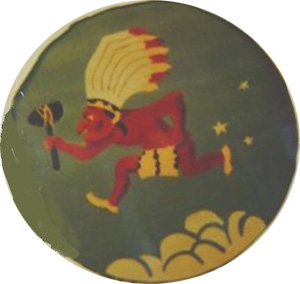Walter Jennings Ives
World War II pilot who flew missions against Germany was awarded the
Silver Star and the Purple Heart
By Frederick N. Rasmussen
December 16, 2009
Walter Jennings Ives, a decorated Army Air Forces pilot who flew 34
missions over Germany aboard Martin B-26 Marauder bombers during World
War II, died Dec. 3 of complications from a stroke at Lorien Mays Chapel
nursing home.
The longtime Riderwood resident was 93.
Mr. Ives was born in Baltimore and raised in a rowhouse in the 2800
block of N. Calvert St. He was a graduate of Polytechnic Institute,
where he played lacrosse and football.
After studying mechanical engineering at Cornell University, Mr. Ives
enlisted as a private in the Maryland National Guard 29th Infantry
Division, 175th Regiment in 1935.
After being commissioned a lieutenant in 1940, Mr. Ives was assigned to
the 175th Regiment, then commanded by his brother, Dudley Ives.
Mr. Ives decided to transfer out of the 29th Division in 1942 and
enrolled at flight school at Randolph Field in Texas. He took additional
aviation training at the Spartan School of Aeronautics in Tulsa, Okla.,
and final flight training at Kelly Field in Texas.
In 1943, Mr. Ives commanded the 556th Bombardment Squadron, 387th
Bombardment Group, composed of B-26s, which he escorted from MacDill
Field in Tampa, Fla., across the Atlantic to Chipping Ongar, England.
Before leaving for England, Mr. Ives, with the help of Frank Onken, who
headed The Baltimore Sun's art department, designed an embroidered
squadron patch featuring an Indian dressed in full battle regalia
running down a cloud at a 20-degree angle.
"It was one [of], if not the only, squadron-level insignia approved by
the Army ... during World War II, and was proudly displayed underneath
his pilot's window with the name of his assigned aircraft, the 'Gravel
Agitator,' " said a son, Charles D. Ives II.
Promoted to major in September 1943, Mr. Ives received a commendation
from the commanding general of the 8th Air Force for "outstanding
performance of duty in action and extraordinary achievement while
participating in aerial flight," and "in support of a secret combined
amphibious maneuver by the United States Armed Forces, and the
destruction of vital enemy installations."
The commendation also praised Mr. Ives' flying abilities.
"In the most adverse flying weather, with ground visibility of less than
one hundred yards, reduced to less than 50 yards for pilots sitting
behind the wet, foggy windshield, these pilots, on 9 September 1943,
took off in a heavily bomb-laden B-26 Marauder aircraft to fly a most
important bombing mission against the German Air Force," it read.
While commander of a captured German airport in Mannheim, Mr. Ives
renamed it Turnbull Field in honor of Jack Turnbull, a Johns Hopkins
University lacrosse star, 1932 Olympian and Army Air Forces pilot.
Mr. Turnbull was killed when his B-24 bomber went down in a severe storm
in 1944 near the Belgian border while returning from a bombing mission
over Germany.
In October 1944, Mr. Ives was decorated with the Silver Star for
"gallantry in action against the enemy" and a Purple Heart after he was
wounded on a mission over Germany.
"While attacking a heavily defended enemy installation, his aircraft was
hit by flak, which knocked out the airspeed indicators and severely
injured his right arm," his son said. "He remained at his post and
guided his element out of the flak area and ordered the bombardier to an
alternate target on the route back to base in England."
Mr. Ives' other decorations included the Distinguished Flying Cross and
Air Medal with four clusters.
Mr. Ives was discharged at war's end with the rank of lieutenant
colonel.
"Walter regaled us with his experiences on many occasions, but they were
always stories about his advocacy for his men and other exploits in
which he 'worked the system' to improve his men's lives while in
uniform, or in which he worked to be a more aggressive and effective
member of our armed forces," said Henry Nipper, a former Riderwood
neighbor who now lives in Omaha, Neb.
"He refused to accept expressions of gratitude about his service and did
not participate in many of the usual VFW, American Legion and other
types of organizations," Mr. Nipper said. "He did participate in several
reunions of his old squadron - particularly with the enlisted men - but
as time passed, these reunions became fewer and far between."
After the war, Mr. Ives worked selling Irish linens and then for 20
years was an insurance adjuster with Maryland Casualty Co. and Fireman's
Fund. He was later associated with a wholesale produce company in Jessup
and a fuel oil company in Bel Air before retiring in 1979.
He was an active communicant of the Episcopal Church of the Good
Shepherd in Ruxton.
After the death of his wife of 32 years in 1979 - the former Mary Anna
"Cathie" Hutchinson, who was from Northern Ireland and whom he had met
during the war - Mr. Ives began spending summers touring Europe and the
British Isles on his 250 Honda scooter.
He was also a daffodil enthusiast and a member of the Maryland Daffodil
Society. He also enjoyed feeding the wildlife and birds that lived
around his Riderwood home.
Plans for a memorial service were incomplete yesterday.
Also surviving are another son, Lawrence Hull Ives; a sister, Louise
Ives; and four grandchildren.
Copyright © 2009
|
